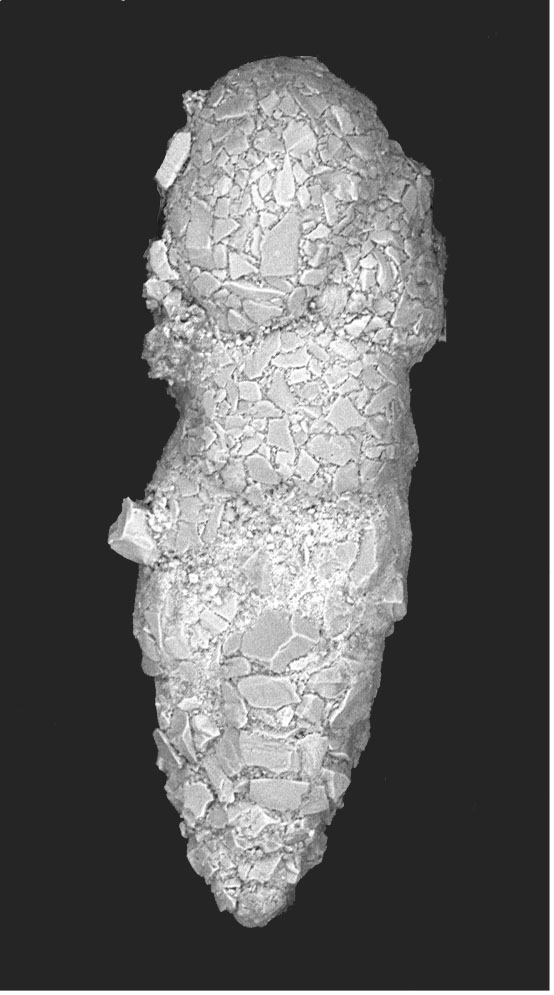Genus Eggerella
Genus Eggerella Cushman 1933
Eggerella Cushman 1933, p 33.
Description – Trochospiral coil with 5 chambers to whorl in early stage, gradually reduced to 3 per whorl, finely agglutinated on pseudochitonous base may be of calcareous particles in calcareous cement, aperture a low interiomarginal slit.
Eggerella advena (Cushman, 1922)
Verneuilina advena Cushman, 1922, p. 141
Eggerelloides advena (Cushman) Cushman, 1937, p. 51, pl. 5, figs 12-15; Cushman 1948, p. 32, pl. 3, fig. 12
Trochammina advena Cushman 1922
Verneuilina advena Cushman, 1922
Eggerella advena (Cushman, 1922); Cushman and McCulloch, 1931, p. 95; Cushman, 1944, p. 13, pl. 2, figs. 6, 7; Cushman, 1948, p. 32, pl. 3, fig. 12a, b; Loeblich and Tappan, 1953, p. 36; Lankford and Phleger, 1973, p. 119, pl. 1, fig. 18; Patterson, Burbidge and Luternauer, 1998, p. 5, pl. 28, fig. 6; McGann, 2007, p. 62, pl. 9, fig. I; Vázquez Riveiros and Patterson, 2008, Fig. 3.4 a-c.
Remarks: Loeblich and Tappan (1953) emended Cushman’s original description of Eggerella advena and synonymized it with Verneulina advena Cushman, 1922, and Eggerella arctica Högland, 1947, and they selected a lectotype. Loebelich and Tappan (1953) noted that this species was described by Cushman from the Hudson Bay Expedition but not figured, and that this original description included that the test was “minute, elongate, triserial, tapering”. This is the description of the genus Verneulina Cushman for which the test is 0.17 – 0.30 mm in length.
Emmeded definition: Test free, elongate, somewhat tapering, early portions with four to five chambers to a whorl, later portions triserial; chambers numerous, low and broad in early portion, increasing in relative height and breadth; sutures distinct, depressed; wall finely arenaceous, with larger grains, rather smooth finished, reddish to yellowish in color with the final whorl much lighter in color and nearly while. Aperture small.
Distribution: This species is common in embayments within Puget Sound, most notably where there are few calcareous species, for example Bellingham Bay. It has been recorded in the Arctic Ocean from numerous stations (Cushman, 1948), and southwestern Alaska to the Aleutian Islands.



